April 2023
1969 Triumph Trophy 250
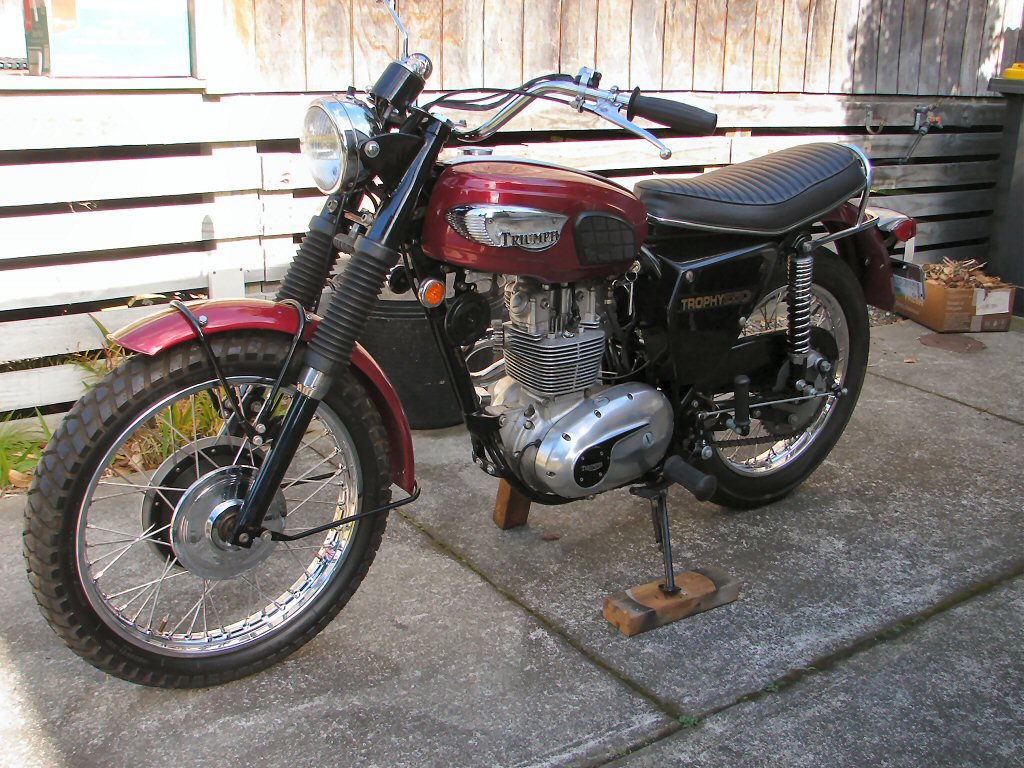
Officially labelled a TR25W, I believe the additional letter denoted "Woodsman", thus posing as an off-roader for the discerning.
This little fella had come my way in 2007 when a mate acquired it. It subsequently changed hands a few times, but appears to have had very little use to date. Possibly too pretty.
The restoration standard of the bike is awesome, especially considering that it costs nearly as much to restore a $7000 bike as it does a $27000, but with the former it is nearly guaranteed that you will never get your money back when you sell it.
That plus the quality of the build means only one thing - it was a labour of love on behalf of the former owner.
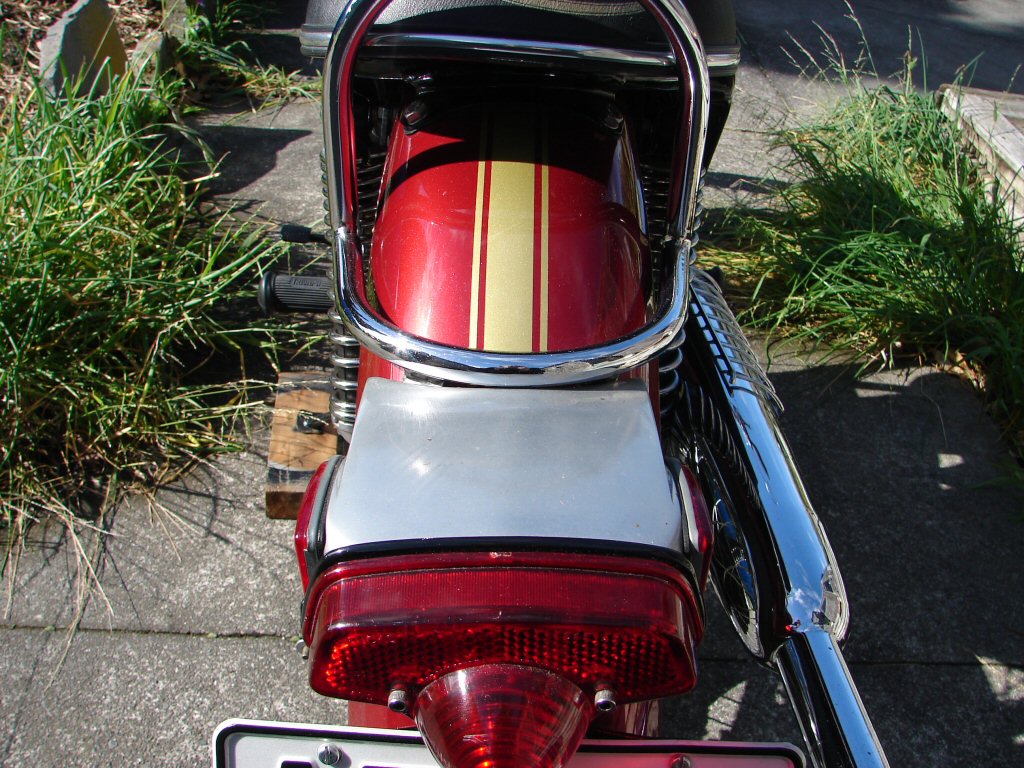
The friend of mine who bought it from the restorer in 2007 did have it running, but it would not go for very long without breaking down. I found that it was pressurising the crankcase because it did not have a functioning engine breather, and had been pushing oil out in various places, one being in the ignition points.
That was why it kept stopping.
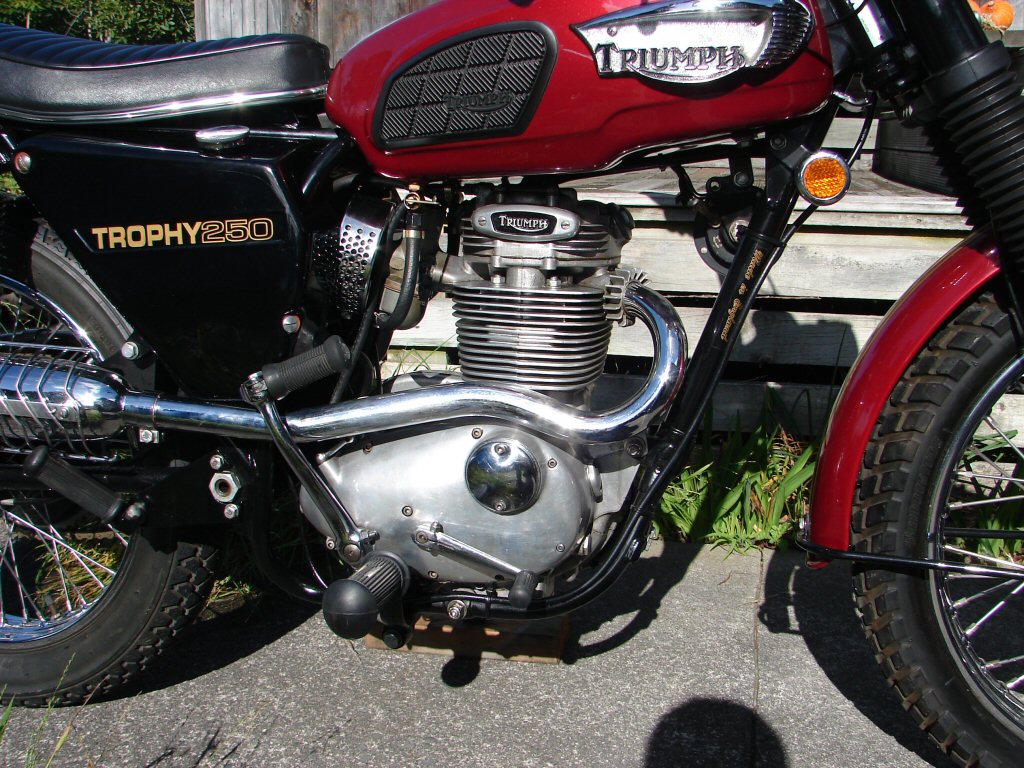
As fixing the factory breather would involve stripping the engine cases, I added a breather via the inlet valve inspection cover, with a concealed hose that vented to atmosphere down by the swingarm.
While you cannot see it clearly, it is directly behind the fuel tap in this photo.
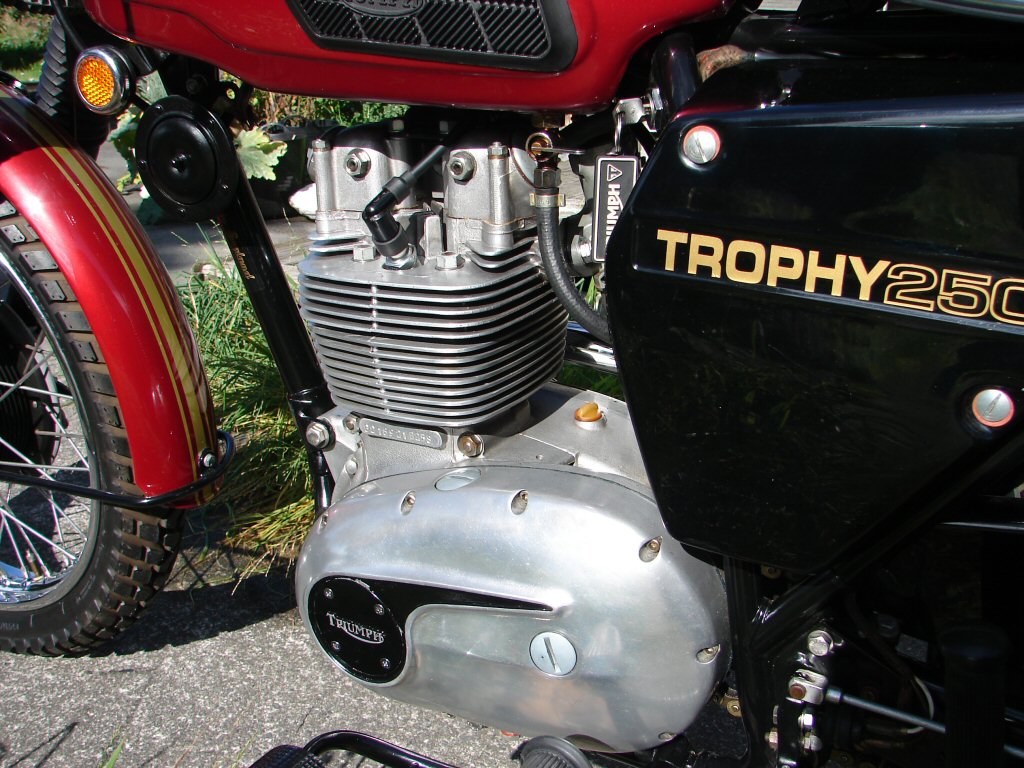
It was the presence of this breather hose that established that this was the very same bike when the current owner first phoned me. He was experiencing a few problems while trying to elicit some life from it having decided it was time to wake it up after just being a "collectable" for quite a few years.
Fortunately, being a small bike, I was able to wedge it into my shed while already working on two others, as he was eager to hear it run, let alone ride it, so he trailered it around and told me what he knew.
Being unfamiliar with dry sump engines, he had initially filled the empty oil tank, then suffered some hydraulic issues when kicking it over, to the tune that after removing the spark plug and kicking it over, a good slug of oil shot out of the cylinder. Discovering his error he had drained the crankcase and put a couple of litres of new oil in the tank some time ago, and that too had wet sumped now.
I decided to start at the beginning and check all vital signs. I fitted the new battery he had brought and checked the electrics. Everything worked except the front brake light switch. There was an inline switch in the cable, but no wires. A quick look in the headlight revealed that the wiring harness did not cater for a front brake light. We shall call it "not fitted on this model".
I removed the spark plug and gave it a few kicks to see if it had a spark. It didn't.
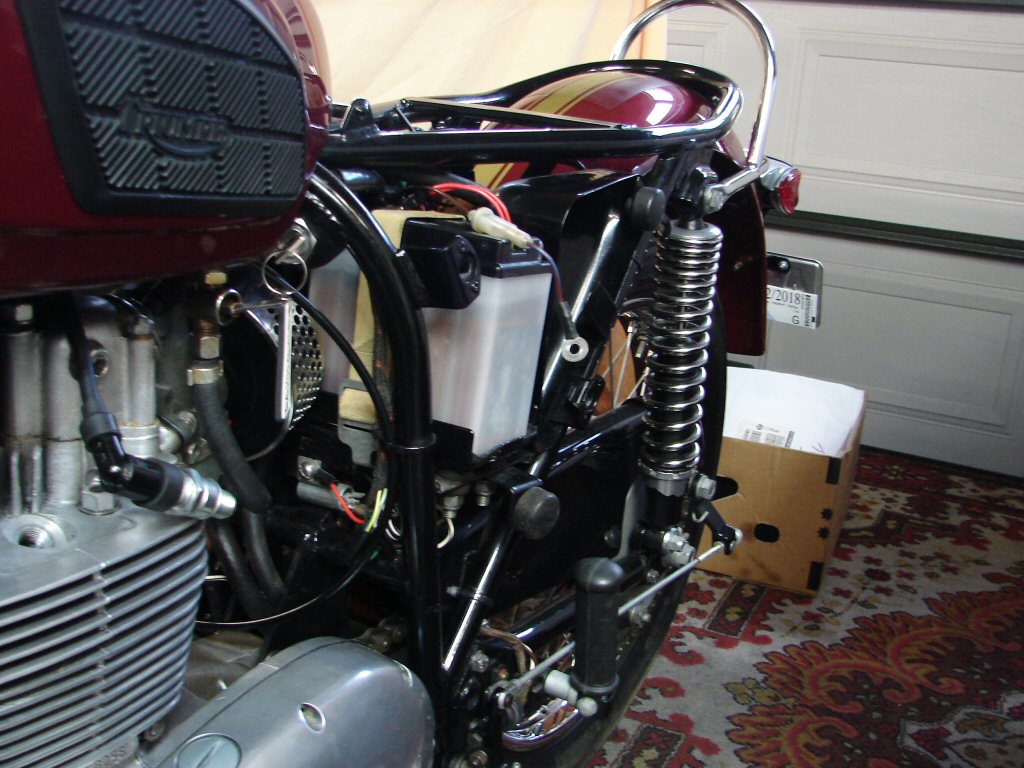
Going to the points I found power, but also found oil between the points. Deja vu. I cleaned them up and now we had a good reliable spark.
I drained the oil from the crankcase. There was about 2 litres, but it was very thin red oil. The oil he had brought for the bike was 30 grade small engine oil. I checked the owners forums regarding the TR250W and found warnings about SAE30 oil use being a serious risk to big end life expectancy, even though it was listed as an approved grade in the workshop manual. The manual also gave Castrol 20W50 as an option, and I decided that would be my choice. The combination of too thin oil and a fragile big end could easily lead to tears.
The primary oil got the same treatment, and the gearbox was found to be up to the mark with a hypoid oil, so that was allowed to stay put.
There was fresh fuel in the tank, so I tried a first start attempt. The carb would not flood easily, and there were absolutely zero signs of life. The owner had reported that after his prolonged session of kicking, there had been still no smell of fuel on the spark plug.
I decided to strip the carb, so removed the seat to make that easier.
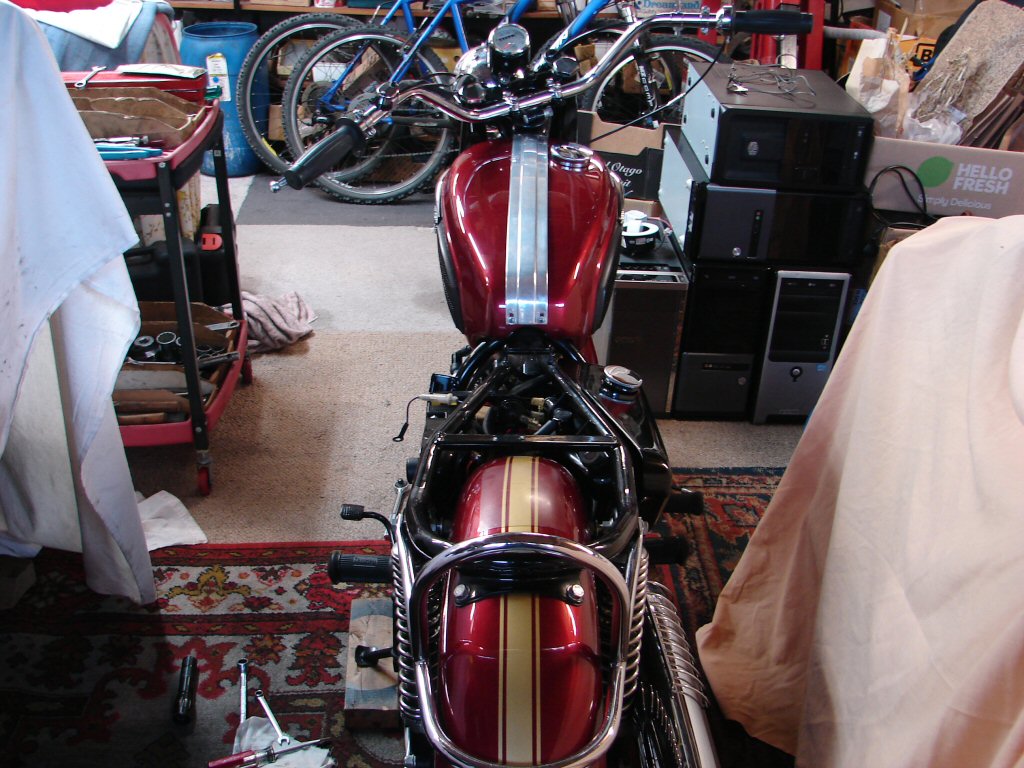
The carb was full of what I would describe as a thin oil. It did not smell like rotten fuel, so may have been some form of preservative or stabiliser. The slide was very sticky in the carb body, but happy enough once it was all cleaned. The idle jet was blocked, so that would not have helped. I altered the float level slightly and put it all back together.
I could now get the carb to flood as required, and it seemed fuel was entering the cylinder.
Before refitting the tank I decided to check that my breather mod was still viable, seeing as there had been oil in the points. I had trouble finding the lower end of the hose. Then I found out why. There is also a breather hose from the top of the oil tank which vents to atmosphere. However, someone had decided to kill two birds with one badly aimed stone, and done away with the oil tank breather, and connected the engine breather to the oil tank. End result - a closed system once again. Sheesh. You really have to check everything. I fitted a new piece of hose to the oil tank and tied the two breathers together down by the swingarm.
The second start attempt was same as the first, with not even one firing pulse evident. Time to check the ignition timing.
There is a plate that is removable at the front of the primary cover, behind which is the alternator and timing pointer. I removed the crankcase aperture plug and found the crankshaft drilling on the firing stroke. The mark on the rotor was a bit off the pointer, so I made a new mark where it should be.
The points plate was at the extreme end of its possible adjustment, and was also timed 180 degrees out. That would not help. I removed and repositioned the advance/retard unit so that the points were opening when the points plate was midway in its adjustment range.
I pulled the spark plug and gave it a trial kick to make sure we still had a spark, and it was all good, so all the covers went back on, and it was time for the third start attempt. After a good flood and a number of kicks I was getting a few kickbacks, and was trying various throttle openings. Finally at the merest crack off the stop it burst into life with quite a healthy exhaust note. Initially it would not accept any further throttle, but I coaxed it until it warmed a little and behaved itself, whereupon I messed with the pilot and slide settings until I had a nice reliable idle. I stopped and started a number of times, and each time it responded best to the slightest degree of throttle off the stop.
Good oh then. Time for a ride.
Geared up and started happily. Graunched into first and headed down the drive, feeling like we were in second. We were. The gearchange turns out to be one up, three down. We proceeded at a leisurely pace around my standard test track, although there was some urge available if you gave it a good twist. Adjusting the mirror gave me a good view of a major blue smoke trail behind us. Oops.
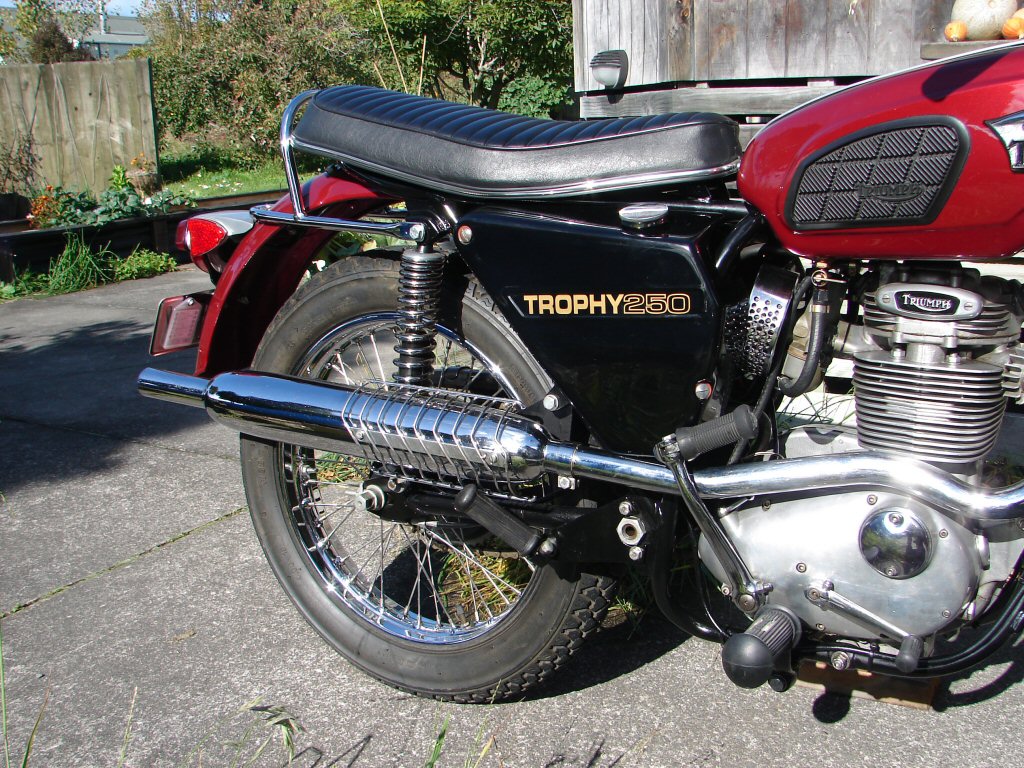
Returning home I let the bike idle for a short time then gave it a brief rev, expecting a cloud of smoke, but while there was a trace, nothing of disaster level. Successive rides were also smoke free, so I can only assume that while the bike had surplus oil levels a bit of oil made it to the exhaust pipe, which would conveniently contain it until burning off once the temperature reached the required level to do so.
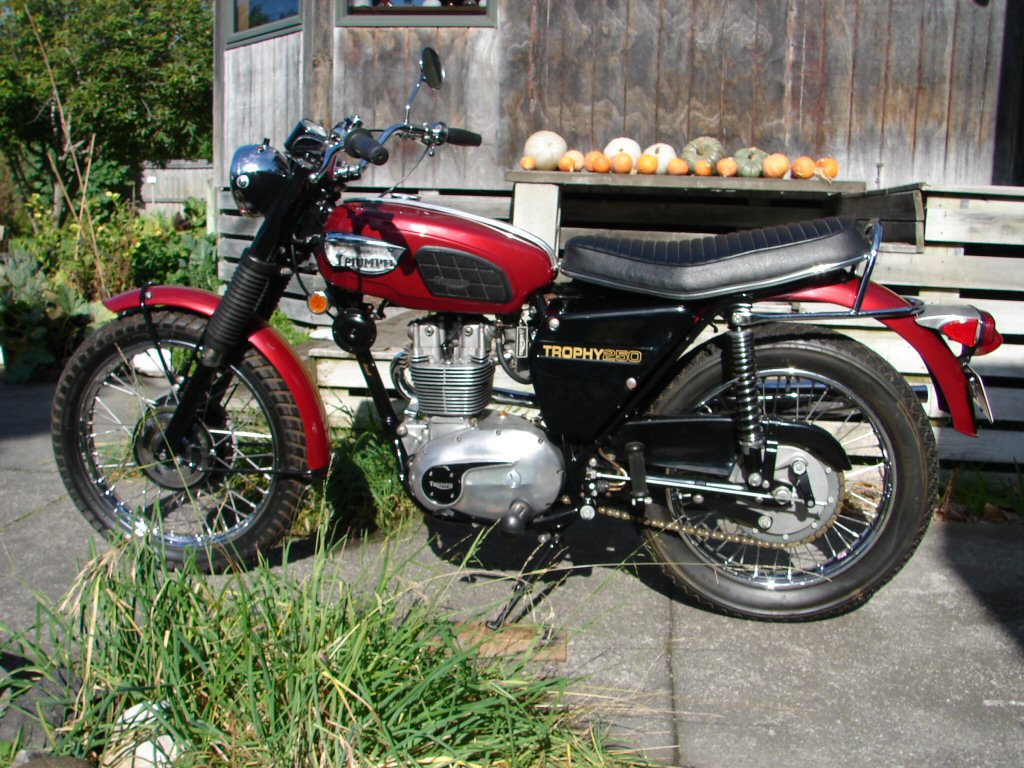
This little beast is a joy to behold in the flesh. The paint and chrome are top knotch as befits a mega restoration, but so nice to see it being used after having spent a long time languishing in various sheds.
This is a rather uncommon model hereabouts, possibly internationally due to unknown production volumes, so most pleasing to have had hands-on experience of it.